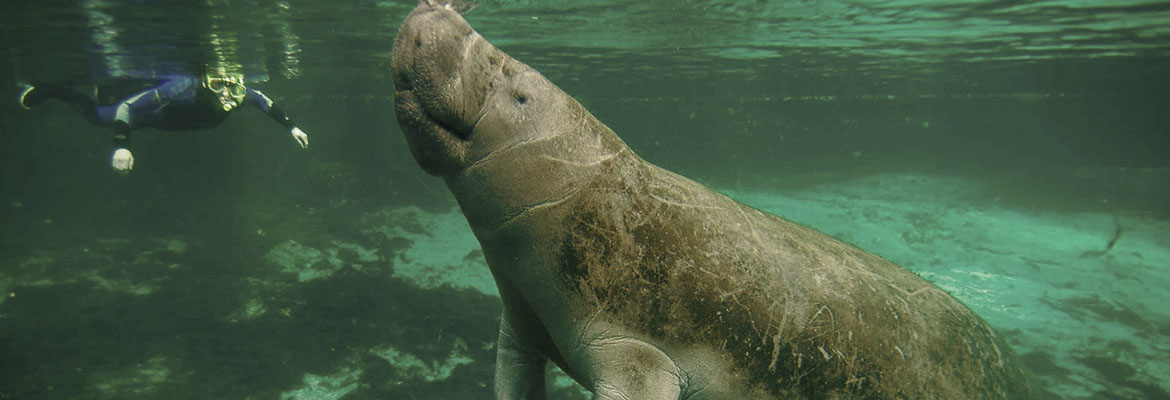
A regular visitor in the Cuyabeno the Amazonian Manatees are the only species of manatees that venture deep into the Amazon river. Puppy-faced, wrinkly skin covered with thin hairs, a round tail, and a pleasingly plump body the Amazonian manatee is a looker. Similar to seals, manatees have no rear flippers and instead possess a round tail for propulsion. Scientifically they are known as Trichechus inunguis, this species name denotes its defining characteristic — inunguis — that means it has no nails on its flippers. Although they are generally grey to better camouflage themselves in the muddy amazon waters their underbellies tend to be white or pinkish. Amazonian manatees are herbivores, hence, they don’t have incisors or canine teeth but are well-equipped with molars designed to crush underwater vegetation. Curiously, and unlike other mammals, Amazonian manatees appear to regenerate molars at the back of their jaws.
Worn out molars that fall out are quickly replaced with brand new molars that move forward to cover the gaps. Their disposition is as sweet as is their face, they are docile animals that prefer calmer blackwater lakes and lagoons. These areas offer abundant underwater vegetation that they can feed on. When the dry season arrives and the flooded rainforest water recedes Amazonian manatees can fast for weeks or months if vegetation is scarce. Their prefered diet includes aquatic and semi-aquatic vegetation such as grasses, water lettuce, bladderworts, hornworts, water lilies and water hyacinths, and if some palm fruit falls in the water they will also eat it.
On an average day an Amazonian manatee can feed on up to 5 to 18% of its body weight. If fasting is necessary they fat reserves and low metabolic rates allow the Amazonian manatee to survive up to seven months with little or no food. As a solitary animal it roams throughout the Amazon basin and can be spotted in Ecuador, Colombia, Peru, Bolivia, Venezuela, Guyana, and Brazil. Sometimes the solitary manatee can be found in groups of up to eight individuals. They can be found feeding on the surface of lakes and rivers. Visitors are likely to first spot the nose of the manatee as they emerge every four minutes for fresh air, nose first. Unlike their international cousins the Amazonian manatee dwells in exclusively freshwater environments. On the lookout for food Amazonian manatees follow the seasonal movements of the Amazon river. During the wet season manatees move towards flooded areas which are nutrient-rich and vegetation abundant, in contrast during the dry season they move to deeper waters. Amazonian manatees breed seasonally during the period when water levels increase. In Ecuador, most births have been reported during the months of January and June but generally births seem to happen often between December and July, most occuring during February and May. The gestation period is twelve to fourteen months and females usually have another pup every two years. Once born the pups are carried on the backs of their mothers or swim close to their sides.
Amazonian manatees control their body temperature in a curious manner. Sphincters in their blood vessels deflect blood flow to areas in close contact to water. Additionally, they use their body fat to reduce heat loss. This is particularly useful during their evening food hunting as Amazonian manatees are both diurnal and nocturnal. Natural predators of the Amazonian manatee include sharks, crocodiles, and jaguars. Unfortunately, manatee fat and meat is highly appreciated by human hunters who pursue the slow moving animal across lakes and streams. In Ecuador, the exact number of manatees is unknown but they are believed to be critically endangered due to habitat loss, fishing, and pollution from oil extraction projects and oil spilling. Beautiful in its own way the Amazonian manatee is a vulnerable species that can greatly benefit from the support from all visitors local and foreign alike.